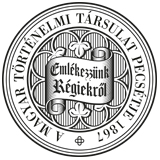Századok – 2021
2021 / 4. szám - TANULMÁNYOK - Erdődy Gábor: A modern polgári nemzetté válás eltérő útjai. A magyar és a belga fejlődés hasonlóságai és különbségei 1825–1848/49
ERDÖDY GÁBOR stabilitásával járult hozzá a nyugat-európai konszolidáció kibontakozásához, az érdekegyesítő politika demokratikus továbbfejlesztésének bázisán politizáló magyar vezérkar a közép-európai térségben egyedül volt képes az alkotmányos kormányzás megőrzése mellett folyamatosan szilárd belpolitikai helyzetet teremteni, s a Habsburg-katonai intervencióval szemben — a korabeli Európában példanélküli módon - sikeres ellenállás kifejtésére alkalmas tömeghadsereget megszervezni, melyet végül csupán a Habsburg-Romanov közös katonai fellépés tudott térdre kényszeríteni. THE DIFFERENT PATHS TO MODERN NATIONHOOD The Similarities and Differences between the Hungarian and Belgian Evolution 1825-1848/49 By Gábor Erdödy SUMMARY The Hungarian reform era and the revolution and war of independence of 1848-1849 feature numerous similiarities with the development of Belgium between 1825 and 1849. After 1815 both nations lived in subjection, the absence of their independent statehood being a constituent part of the European status quo. Their situation was determined by the rule of foreign absolutism. Amid radically different social and international conditions, both the Belgian revolution of 1830 and its Hungarian counterpart of 1848 regarded as its goal the establishment of national independence and a constitutional parlamentary monarchy, and the accomplishment of these aims necessarily foreshadowed the profound modification of the European political order. In 1848-1849 Belgium and Hungary considerably influenced the development of the continental processes. By detaching itself from the revolutionary movement and creating stability in the coutnry, the Brussels government contributed to the European consolidation. By democratically increasing its social basis, the Hungarian leadership became the only one in Europe to maintain a constitutional government and internal consolidation, and thereby to organise a mass army against Habsburg aggression that could only eventually be defeated by Russian military intervention. 841
